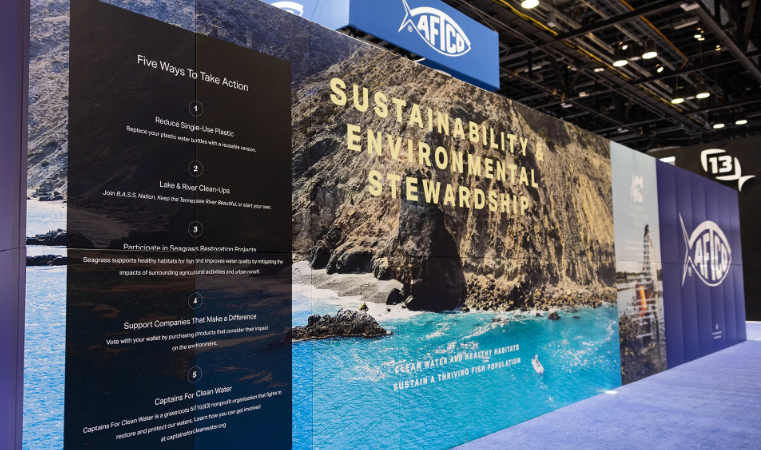Trade shows are dynamic hubs where businesses showcase their latest products and innovations, attracting thousands of attendees. However, the environmental impact of these events often goes unnoticed.
From excessive waste generation to high energy consumption, trade shows can be detrimental to the planet if sustainability measures aren’t in place. But fear not, trade show exhibitors! There are various eco-friendly options and green practices you can adopt to minimize your environmental footprint while still maximizing your impact.
1. Eco-Friendly Booth Materials: Start by reconsidering the materials you use for your booth. Opt for sustainable options such as recycled cardboard, bamboo, or other renewable resources for signage, displays, and furniture. These materials not only reduce your carbon footprint but also demonstrate your commitment to sustainability to potential clients and partners.
2. Digital Marketing and Collateral: Embrace digital alternatives to traditional paper marketing materials. Utilize digital signage, interactive displays, and electronic brochures to convey your message effectively without contributing to paper waste. Additionally, encourage attendees to scan QR codes for more information rather than handing out flyers or pamphlets.
3. Sustainable Giveaways: Instead of distributing disposable items like plastic pens or keychains, invest in eco-friendly giveaways that align with your brand values. Consider items made from recycled materials, such as tote bags, reusable water bottles, or organic cotton T-shirts. Not only do these items reduce waste, but they also serve as long-lasting reminders of your brand.
4. Energy-Efficient Lighting: Lighting plays a crucial role in enhancing the ambiance of your booth, but it can also consume a significant amount of energy. Opt for LED lighting, which is more energy-efficient and has a longer lifespan compared to traditional lighting options. Additionally, make use of natural light whenever possible to minimize electricity usage during the day.
5. Sustainable Transportation: Consider the environmental impact of transportation when planning for trade shows. Encourage your team to carpool or use public transportation to reduce carbon emissions. If feasible, explore options for offsetting the carbon footprint of your travel by investing in carbon offset programs or supporting renewable energy projects.
6. Waste Reduction and Recycling: Implement waste reduction strategies by minimizing single-use plastics and providing clearly labeled recycling bins at your booth. Choose catering options that prioritize compostable or recyclable packaging, and avoid excess food waste by planning your quantities wisely.
7. Offset Carbon Emissions: Acknowledge that despite your best efforts, some emissions may still occur. Take responsibility for these emissions by investing in carbon offset programs that fund projects such as reforestation, renewable energy, or methane capture initiatives, effectively neutralizing your carbon footprint.
In conclusion
Sustainability is not just a trend but a responsibility that all trade show exhibitors should embrace. By adopting green practices and incorporating eco-friendly alternatives into your booth design and operations, you not only reduce your environmental impact but also position your brand as a leader in corporate social responsibility.
Let’s strive to make trade shows not only showcases of innovation but also beacons of sustainability for a brighter, greener future!


